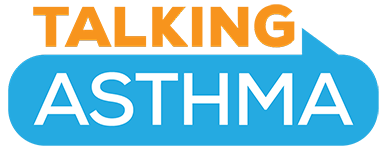Exercise is important for overall health as well as lung health, and there are many benefits of physical activity for people living with asthma. Daily exercise helps to improve your lungs capacity, in other words, the maximum amount of oxygen your body can use. Also, exercise increases blood flow to your lungs, promoting blood flow to the heart which pumps oxygen throughout your body. For example, people who exercise have more ability to pull oxygen from the lungs and into the blood that feeds the muscles that keep us going.
Exercise-Induced Asthma
Some people with asthma only have symptoms (e.g., shortness of breath, chest tightness, wheezing or coughing) during exercise or when doing physically demanding tasks. This is called exercise-induced asthma or exercise-induced bronchospasm. But you don’t have to let asthma hold you back from being active. In fact, many Olympians and professional athletes have asthma. As long as you manage your symptoms, you can participate in any sport or activity.
If you have asthma symptoms during or shortly after you exercise, be sure to talk to your doctor about it. Are you just out of shape? Is it exercise-induced asthma or poorly controlled asthma? You will need to work with your doctor to find out what type of asthma you have. You may benefit from different treatment options, like adding a daily controller medicine to your asthma treatment plan.
Tips for Healthy Lungs
If asthma symptoms keep you from being physically active, ask your doctor:
- “Are there any activities that I should avoid?”
- “Are there any asthma medicines that I should take before I exercise?”
Generally, people with asthma can participate in all types of exercise. You may need to take medicine before you exercise. Some additional things that can help include:
- Start any exercise with a warm-up period.
- Cover your nose and mouth with a scarf when exercising outdoors in cold temperatures.
- Limit exercise or strenuous activities outdoors when the air quality is unhealthy (orange) and avoid outdoor activities when the air quality is red, purple or maroon.
- Remember to include a cool down period.
If you start to have pain or a tight feeling in your chest, have a cough or become short of breath during exercise, stop the activity right away. Take your quick-relief inhaler. Sit down and try to relax. Try a belly breathing exercise for relaxation. For kids, they should be sure to tell an adult as soon as symptoms start, take their medicine, and sit down and try to relax.
Being aware of your asthma signs and symptoms can help you take action before your breathing gets worse. Not everyone has the same symptoms, so be sure to learn yours.
Don’t let your asthma hold you back from being active and healthy. Learn more about managing your asthma and download Staying Active with Exercise-Induced Asthma to share your doctor at your next visit.

